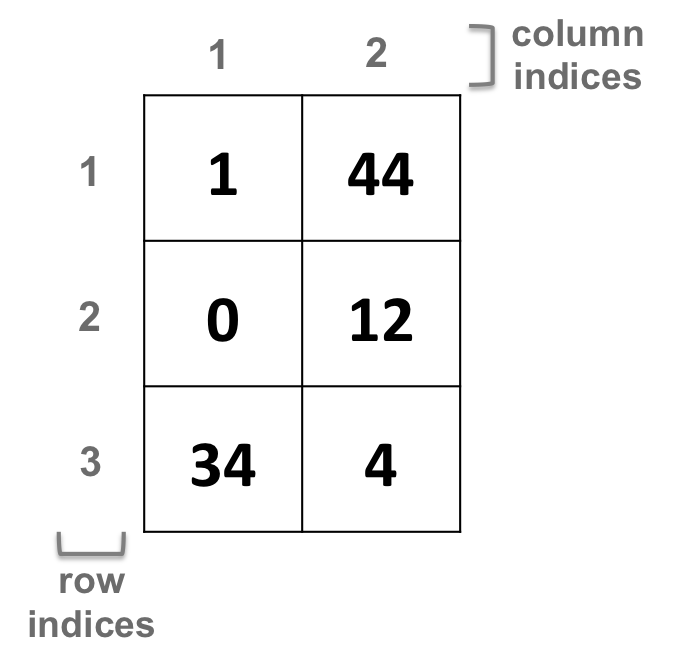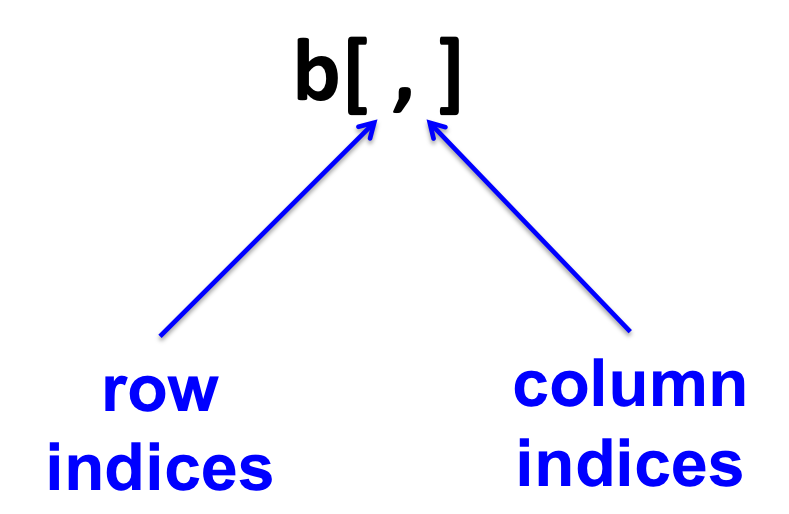9.5 Matrices
A matrix is a 2 dimensional vector.
All columns in a matrix must have:
- the same type (numeric, character or logical)
- the same length
9.5.1 Creating a matrix
- From vectors with the rbind function:
x <- c(1, 44)
y <- c(0, 12)
z <- c(34, 4)
# rbind: bind rows
b <- rbind(x, y, z)- From vectors with the cbind function:
i <- c(1, 0, 34)
j <- c(44, 12, 4)
# cbind: bind columns
k <- cbind(i, j)- From scratch with the matrix function:
# nrow: number of rows
# ncol: number of columns
pp <- matrix(c(1, 0, 34, 44, 12, 4),
nrow=3,
ncol=2)9.5.2 Two-dimensional object
Vectors have one index per element (1-dimension).
Matrices have two indices (2-dimensions) per element, corresponding to its corresponding location: row and column number:

- Fetching elements of a matrix:
The “coordinates” of an element in a 2-dimensional object will be first the row (on the left of the comma), then the column (on the right of the comma):

9.5.3 Matrix manipulation
- Add 1 to all elements of a matrix
b <- b + 1- Multiply by 3 all elements of a matrix
b <- b * 3- Subtract 2 to each element of the first row of a matrix
b[1, ] <- b[1, ] - 2- Replace elements that comply a condition:
# Replace all elements that are greater than 3 with NA
b[ b > 3 ] <- NAHANDS-ON
- Create a matrix, using the 2 following vectors vv1 and vv2 as columns:
vv1 <- c(43, 21, 54, 65, 25, 44)
vv2 <- c(0, 1, 1, 0, 1, 0)Save the matrix in the object mm1.
- Add 2 to each element of mm1.